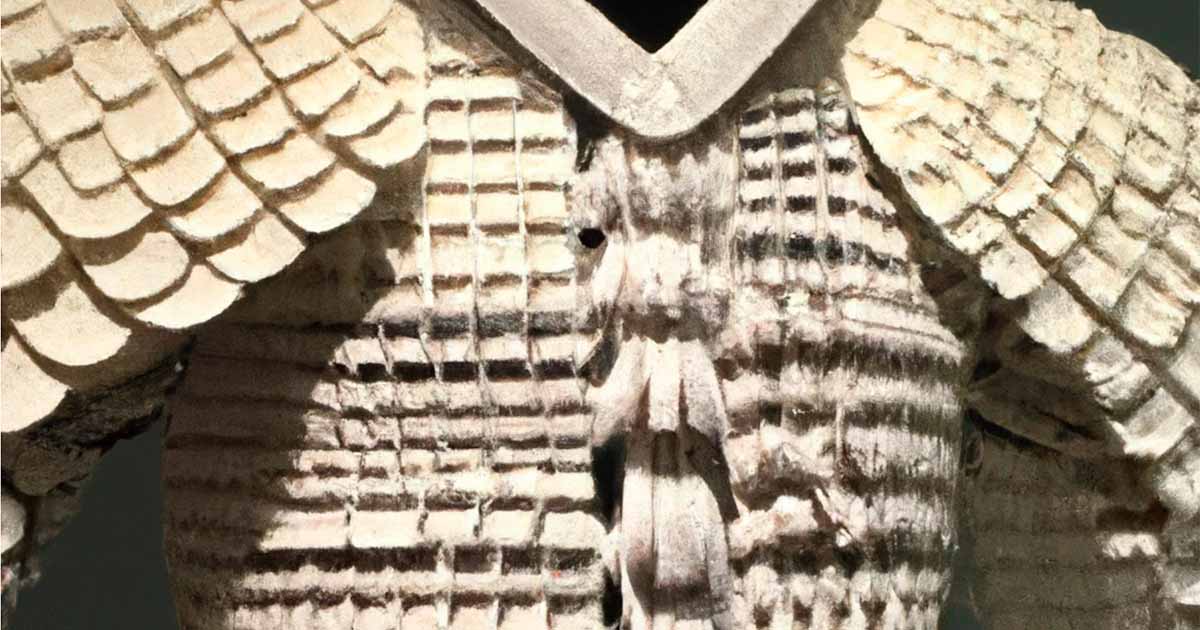Ancient Chinese Paper Armor Was Tougher Than Steel
You’ve probably heard the saying “the pen is mightier than the sword,” but have you heard of paper armor being stronger than metallic protective clothing? It goes against everything we’ve learned about warfare; whereby burly warriors are usually clad in steel or iron plate armor. But according to ancient Chinese records, using paper armor was sometimes deemed the superior option.
Papermaking originated in China 2,000 years ago during the Eastern Han period. The Chinese eunuch Cai Lun is credited with the invention, though examples of earlier, more primitive, paper have been found. Paper was a game-changing invention, providing a more practical writing surface than bamboo, wood or silk. In addition to its obvious uses, the Chinese even used it to make paper armor.
Historically, the Chinese have demonstrated an impressive ability to protect soldiers with a variety of materials, ranging from turtle shell, bronze, stone, leather and eventually steel, expertly crafted into small, square, rectangular and fish scale-shaped pieces to provide optimal protection during warfare. What may come as a surprise is the mention of silk and paper armor in ancient Chinese records.

Sleeved paper armor (on the left) and cotton, paper and rattan helmets (on the right) as depicted in a Ming Dynasty military manual. (Public domain)
In Hand Papermaking Magazine Peter Dekker noted that the earliest mention of paper armor is during the Tang Dynasty (618 to 907 AD). It is said that Shang Suiding invented paper armor to help civilians defend themselves during war. The governor of He-Dong is even reported to have outfitted an army of one thousand with suits of pleated paper armor.
According to Berthold Laufer, Tang period paper armor was made of folded paper sheets, while troops in An-hui Province, celebrated for its paper manufacture, are remembered for paper armor created out of triangular scales. The most detailed account of paper armor is contained in the 1621 Wubei Zhi or “Treatise on Military Preparedness” in which naval commander Mao Yuanyi explained that for soldiers in the south “the best choice for foot soldiers is paper armor, mixed with a variety of silk and cloth.”

Representational image to explain the way in which individual scales were sewn together to create paper armor. In the image a Qin dynasty Terracotta Army soldier wearing armor. (Camphora / CC BY-SA 4.0)
Qing Dynasty descriptions favored Korean paper for its toughness, and US Consul Edward Bedlow remarked; “It seems ridiculous to call such combinations armor, and yet they make an armor superior in many instances to steel.”
The Discovery Channel's MythBusters tested whether paper armor was as protective as steel and found paper armor was more effective against swords and arrows. Paper was likely folded and sewn into wads in cotton pouches to create individual paper scales, before being sewn into a cotton backing, explained Scott Rodell. While effective against arrows and musket-balls, paper armor was not efficient against rifle bullets. Light-weight and resistant to rust, modern-day bulletproof armor is based on similar principles.
Top image: Representational image of Chines paper armor. Source: AI generated




















Comments
Paper might be better than steel for the purpose, obviously due to its light-weight, and being somewhat strong with multiple layers. But even better would be a thick weave of hemp fiber, which would be MUCH stronger, just as light, more comfortable and durable, and probably (just guessing) mostly what they did use at the time. But paper version gets the print here, understandably.
Nobody gets paid to tell the truth.